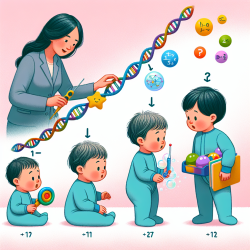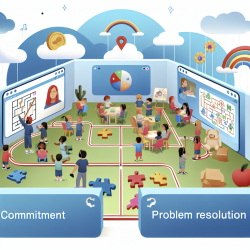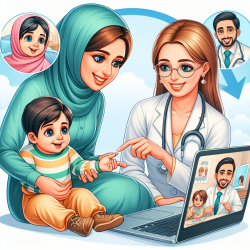As a practitioner dedicated to fostering positive outcomes for children, it's essential to stay informed about the latest research in the field. A recent study titled Atypical Object Exploration in Infants At-Risk for Autism During the First Year of Life by Kaur, Srinivasan, and Bhat (2015) offers valuable insights into early markers of Autism Spectrum Disorder (ASD) and suggests ways to implement these findings in clinical practice.
The study followed 16 at-risk infants and 16 typically developing (TD) infants from 6 to 15 months of age, examining their object exploration behaviors. The research identified several key differences in how at-risk infants interacted with objects compared to their TD peers. These differences can serve as early indicators of developmental delays and inform intervention strategies.
Key Findings:
- At-risk infants showed less grasping of rigid objects at 6 months, indicating potential fine motor delays.
- There was a greater amount of visual fixation on objects among at-risk infants, which could be an early sign of atypical sensory processing.
- At-risk infants exhibited persistent mouthing behaviors at 15 months, suggesting delays in transitioning to more advanced forms of exploration.
Implications for Practice:
Understanding these differences can help practitioners identify at-risk infants earlier and tailor interventions to address specific developmental needs. Here are some strategies based on the study's findings:
- Monitor Object Exploration: Regularly observe how infants interact with various objects. Pay attention to grasping, mouthing, and visual fixation behaviors as potential early indicators of ASD.
- Promote Fine Motor Skills: Encourage activities that enhance fine motor control, such as reaching and grasping exercises. This can help at-risk infants improve their manual exploration abilities.
- Use Structured Play: Incorporate toys with different textures, shapes, and sizes to promote diverse forms of exploration. Structured play can help at-risk infants develop more advanced exploratory behaviors.
- Engage in Social Play: Facilitate interactions between infants and caregivers during play. Socially embedded play can enhance both motor and social communication skills.
By implementing these strategies, practitioners can better support the developmental needs of at-risk infants and potentially mitigate some of the early signs of ASD. Early intervention is crucial, and using data-driven approaches ensures that the interventions are both effective and evidence-based.
To read the original research paper, please follow this link: Atypical object exploration in infants at-risk for autism during the first year of life.










